Overview:
Italy, the land of art, history, and breathtaking landscapes, stands as one of the most captivating destinations in the world.
Renowned for its rich cultural heritage, stunning architecture, and culinary delights, Italy is a must-visit for travelers seeking a blend of ancient history and modern elegance.
From the ruins of Rome to the romantic canals of Venice, and the rolling hills of Tuscany to the rugged coastline of Amalfi, every corner of Italy offers something unique and unforgettable.
In this guide, we will explore the 15 best places to visit in Italy, highlighting their historical and cultural significance, unique features, the best time to visit, and essential travel tips.
Table of Contents
1. Colosseum, Rome
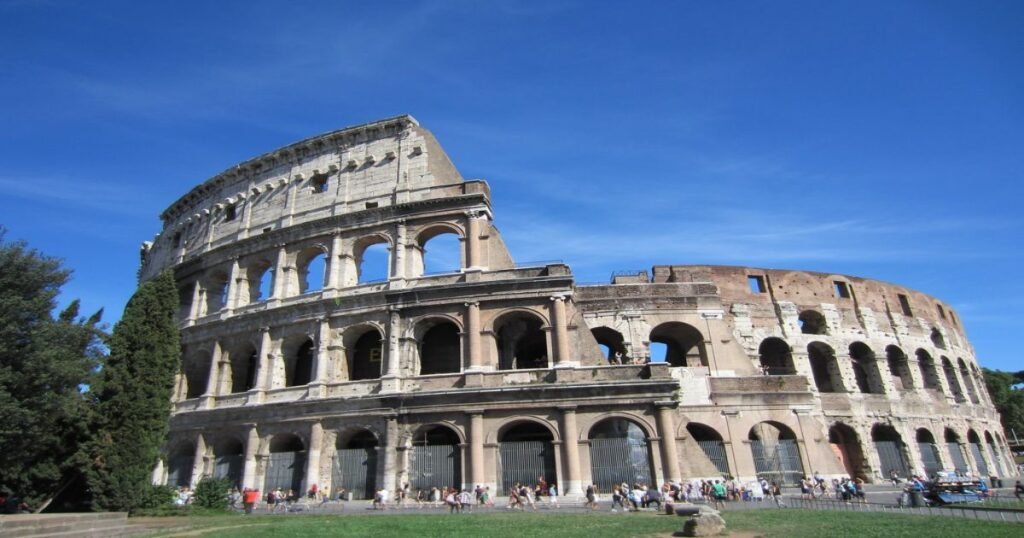
The Colosseum, an iconic symbol of Rome, is one of the most famous ancient structures in the world. This grand amphitheater, built in 80 AD, hosted gladiator contests, public spectacles, and other events for the citizens of Rome.
Historical and Cultural Significance: The Colosseum stands as a testament to the architectural and engineering brilliance of the Roman Empire. It was used for over 400 years and could accommodate up to 50,000 spectators. Today, it’s a UNESCO World Heritage Site and one of the most visited landmarks in Italy.
Unique Features: Its impressive structure, complete with underground chambers and intricate passageways, offers insight into the complex organization of ancient Roman games and events.
Best Time to Visit: Visit between April and October for pleasant weather, with early mornings or late afternoons being the best times to avoid crowds.
Travel Tips:
- Transportation: The Colosseum is easily accessible by metro, bus, or tram. The nearest metro station is Colosseo.
- Accommodation: Stay in Rome’s historic center or near the Colosseum for convenient access.
- Local Customs: Respect the historical site by not touching or climbing on the ancient structures. Guided tours are recommended to gain deeper insight.
2. Vatican City
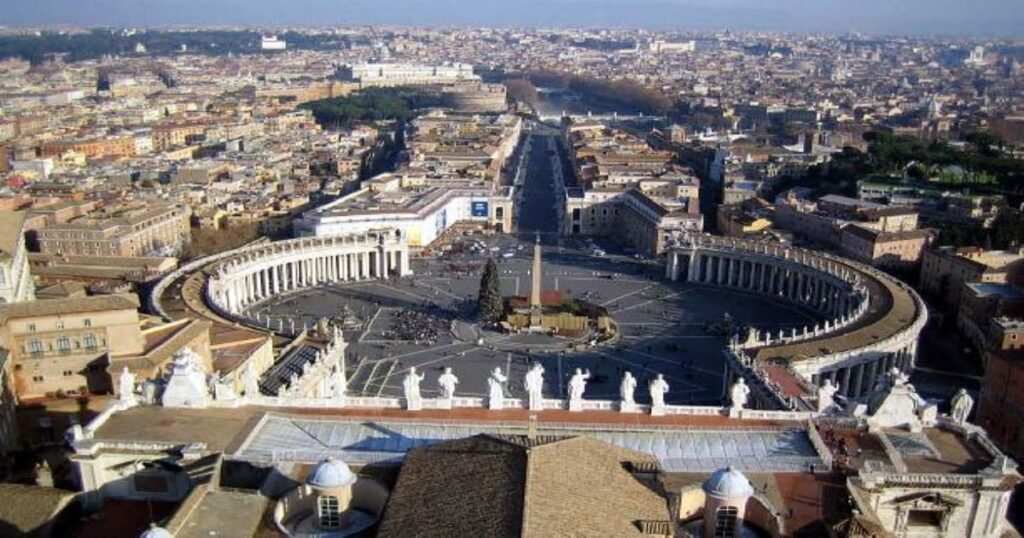
Vatican City, the world’s smallest independent state, is the spiritual and administrative center of the Roman Catholic Church. It houses the Pope and some of the most important art collections and religious sites in the world.
Historical and Cultural Significance: Home to St. Peter’s Basilica, the Sistine Chapel, and the Vatican Museums, Vatican City is a treasure trove of Renaissance and Baroque art. It holds immense religious significance and attracts millions of pilgrims and tourists each year.
Unique Features: The Sistine Chapel, with its ceiling painted by Michelangelo, and the grandeur of St. Peter’s Basilica are highlights that shouldn’t be missed.
Best Time to Visit: Visit between April and October, except during peak religious holidays, to experience fewer crowds.
Travel Tips:
- Transportation: Vatican City is within Rome and can be reached by metro or bus. The nearest metro station is Ottaviano-San Pietro.
- Accommodation: Stay in the Prati neighborhood or near the Vatican for easy access.
- Local Customs: Dress modestly when entering religious sites. Shoulders and knees should be covered.
3. Venice Canals, Venice
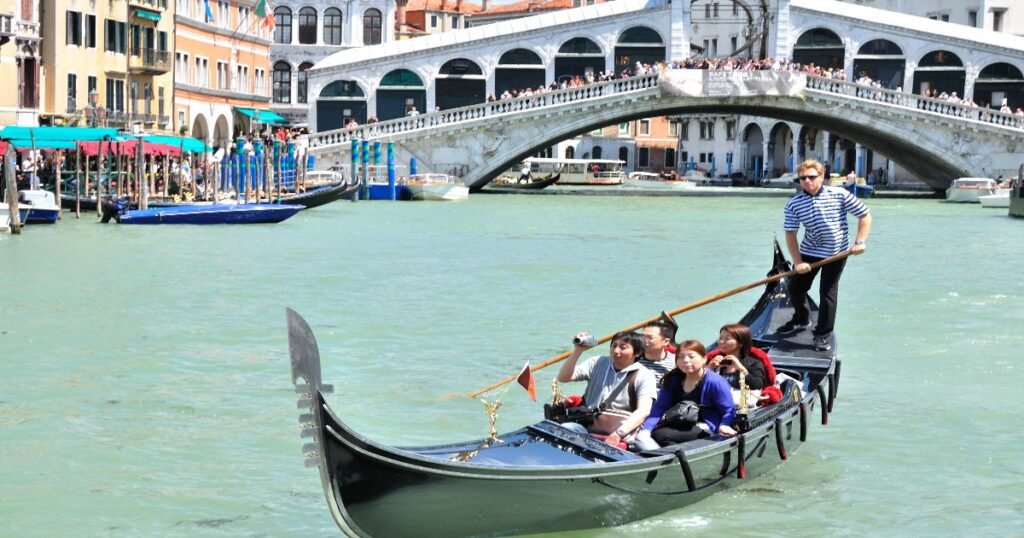
The enchanting canals of Venice, with their iconic gondolas, create a unique and romantic atmosphere. Venice’s intricate network of waterways and narrow alleys make it one of the most picturesque cities in the world.
Historical and Cultural Significance: Venice has been a major maritime power and trading hub since the Middle Ages. Its unique architecture, influenced by Gothic and Byzantine styles, reflects its historical wealth and significance.
Unique Features: The Grand Canal, lined with beautiful palaces, and landmarks like St. Mark’s Square and the Rialto Bridge are quintessential Venice experiences.
Best Time to Visit: Visit between April and June or September and October for pleasant weather and fewer tourists.
Travel Tips:
- Transportation: Venice is a pedestrian city. Use water taxis or vaporettos to get around.
- Accommodation: Stay in the San Marco or Dorsoduro districts for proximity to major attractions.
- Local Customs: Avoid sitting or eating on the steps of historical monuments. Be mindful of noise levels, especially in residential areas.
4. Leaning Tower of Pisa, Pisa
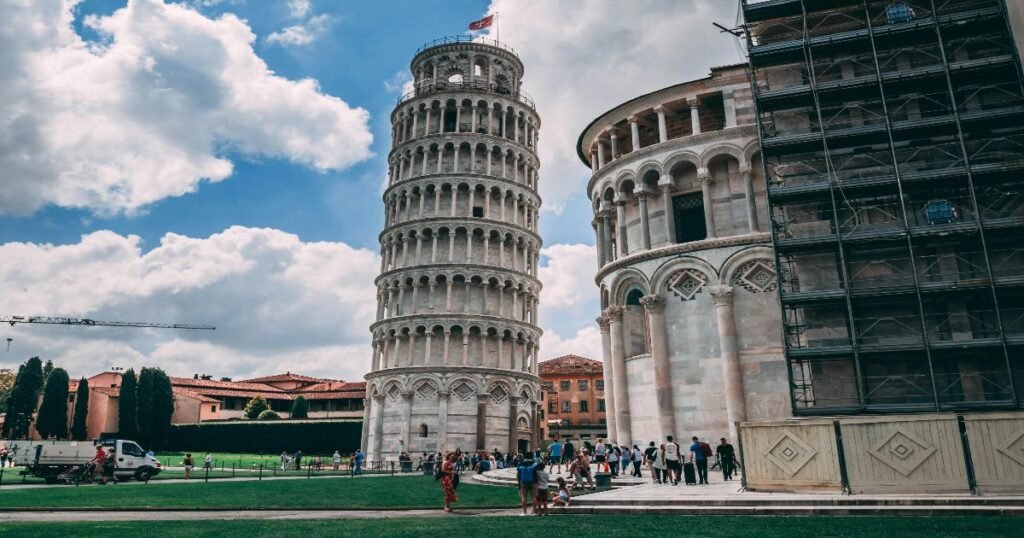
The Leaning Tower of Pisa is one of the most famous architectural landmarks in the world, known for its unintended tilt. This freestanding bell tower is part of the Cathedral of Pisa and attracts millions of visitors annually.
Historical and Cultural Significance: Constructed in 1173, the tower’s tilt was caused by unstable soil. Efforts to stabilize it have been ongoing for centuries, and today it stands as a symbol of resilience and innovation.
Unique Features: Climbing the 294 steps to the top of the tower offers stunning views of the city and a unique perspective of its famed lean.
Best Time to Visit: Visit between April and June or September and October to avoid the heat and crowds of the peak summer season.
Travel Tips:
- Transportation: Pisa is easily accessible by train from Florence or Rome. From the train station, it’s a short bus ride to the tower.
- Accommodation: Stay in central Pisa for convenient access to the tower and other attractions.
- Local Customs: Be respectful of the site and avoid disruptive behavior while taking photos.
5. Amalfi Coast, Campania
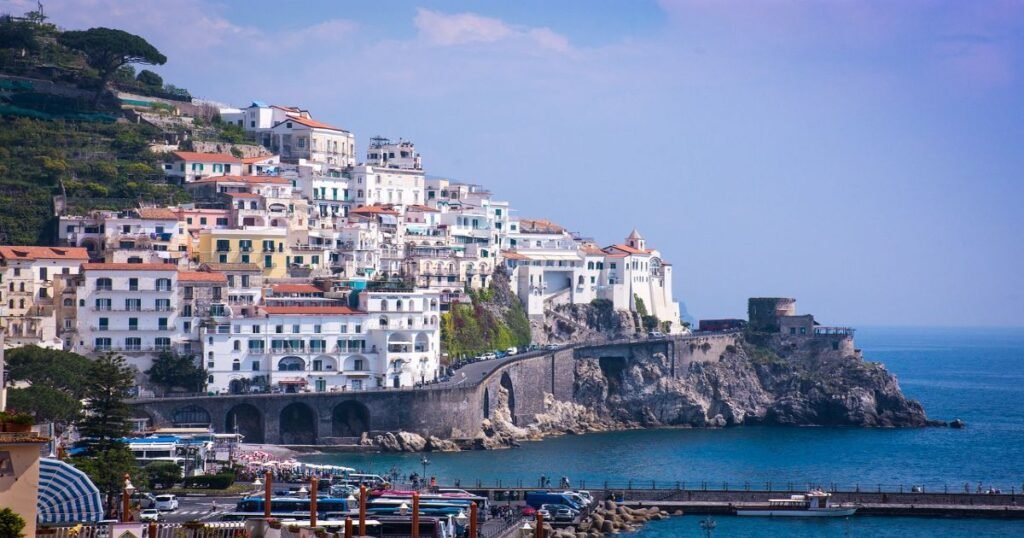
The Amalfi Coast, a UNESCO World Heritage Site, is known for its dramatic cliffs, stunning coastline, and colorful villages like Positano and Amalfi. It’s a top destination for nature lovers, hikers, and those seeking a luxurious coastal escape.
Historical and Cultural Significance: The Amalfi Coast has been a popular retreat since Roman times. Its charming villages, with their pastel-colored houses, reflect the region’s maritime history and artistic heritage.
Unique Features: The scenic coastal drive, along with opportunities for boating, hiking, and tasting local cuisine, make the Amalfi Coast an unforgettable experience.
Best Time to Visit: Visit between May and September for sunny weather and clear skies, ideal for beach activities and sightseeing.
Travel Tips:
- Transportation: Rent a car for flexibility, but be prepared for narrow, winding roads. Ferries and buses are also available.
- Accommodation: Stay in Positano, Amalfi, or Ravello for stunning views and easy access to the coast.
- Local Customs: Dress appropriately when visiting churches and respect local traditions and customs, especially in smaller villages.
6. Florence Cathedral (Duomo), Florence
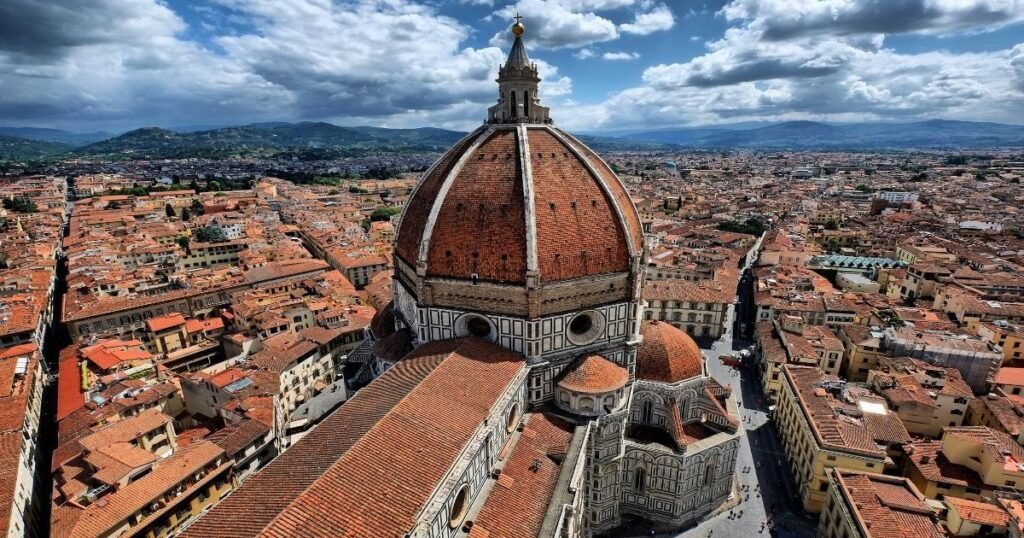
The Florence Cathedral, also known as the Duomo, is an architectural masterpiece and one of the most iconic landmarks in Italy. Its striking red dome, designed by Filippo Brunelleschi, dominates the skyline of Florence.
Historical and Cultural Significance: The cathedral was completed in the 15th century and remains a symbol of Florence’s artistic and architectural achievements during the Renaissance.
Unique Features: Climb to the top of the dome or the nearby bell tower for panoramic views of the city.
Best Time to Visit: Visit between April and October for pleasant weather, with early mornings being the best time to avoid long lines.
Travel Tips:
- Transportation: Florence is a walkable city, and most attractions are within close proximity.
- Accommodation: Stay in the historic center for easy access to the Duomo and other landmarks.
- Local Customs: Modest dress is required when entering the cathedral. Respect the silence inside the church.
7. Cinque Terre, Liguria
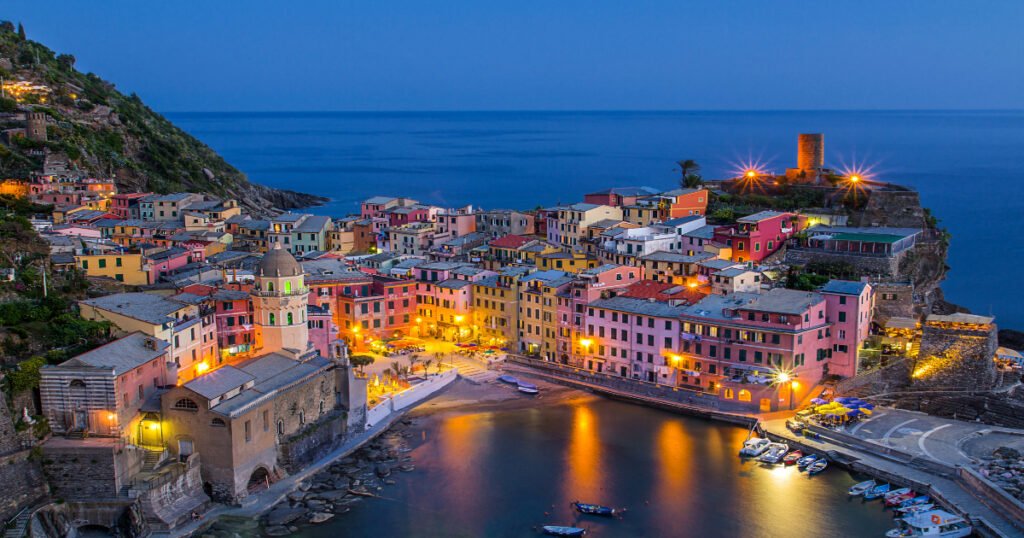
Cinque Terre, meaning “Five Lands,” is a picturesque region along the Ligurian coastline, consisting of five colorful fishing villages—Monterosso al Mare, Vernazza, Corniglia, Manarola, and Riomaggiore. Each village is perched on dramatic cliffs, overlooking the sparkling blue sea, and connected by hiking trails.
Historical and Cultural Significance: The villages of Cinque Terre have retained their medieval charm and unique character. Traditionally fishing and farming communities, the villages are known for their terraced vineyards, historic churches, and authentic Italian culture.
Unique Features: Explore the scenic coastal paths, swim in secluded beaches, and enjoy the stunning views of pastel-colored houses cascading down the hillsides.
Best Time to Visit: The best time to visit Cinque Terre is between May and September when the weather is ideal for hiking and exploring the villages.
Travel Tips:
- Transportation: The villages are connected by train, and cars are restricted in most areas. Opt for trains or ferries to travel between the towns.
- Accommodation: Stay in one of the Cinque Terre villages for an immersive experience, or opt for nearby La Spezia for budget-friendly options.
- Local Customs: Respect the local environment by staying on designated hiking trails and refraining from littering. Support local businesses by purchasing locally-made products.
8. Pompeii and Mount Vesuvius, Campania
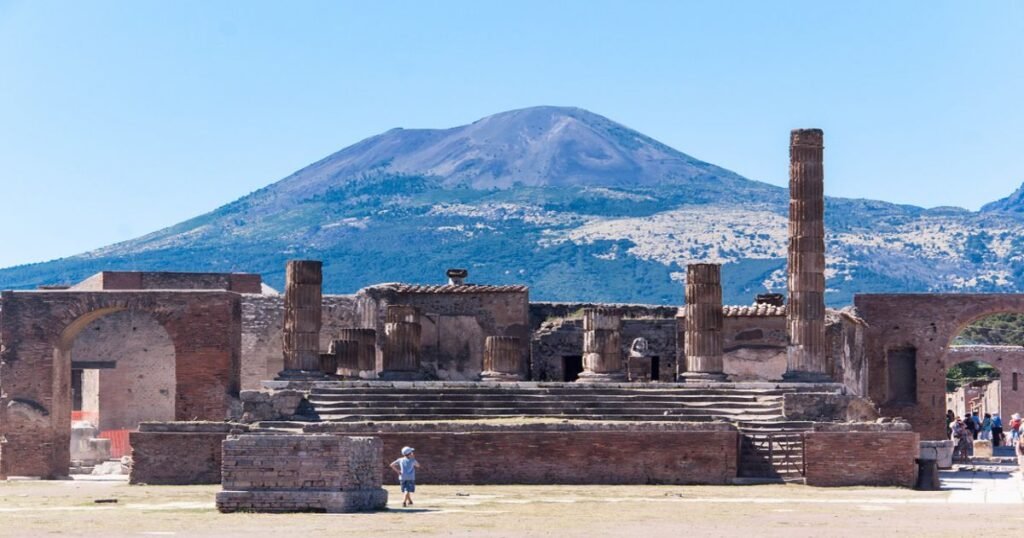
The ancient city of Pompeii, buried under ash and pumice after the catastrophic eruption of Mount Vesuvius in 79 AD, offers a glimpse into Roman life nearly 2,000 years ago. The site, preserved by volcanic ash, is one of the most significant archaeological sites in the world.
Historical and Cultural Significance: Pompeii’s ruins, including houses, temples, and frescoes, tell the story of a thriving city frozen in time. Mount Vesuvius, which remains an active volcano, looms over the ruins and serves as a reminder of nature’s power and unpredictability.
Unique Features: Walk through the ancient streets, explore well-preserved buildings, and visit the Villa of the Mysteries with its intricate frescoes. Hike up Mount Vesuvius for a panoramic view of the crater and the surrounding landscape.
Best Time to Visit: Visit between March and May or September and November to avoid the peak summer heat and crowds.
Travel Tips:
- Transportation: Pompeii is accessible by train from Naples or Sorrento. From Pompeii, buses and tours are available to reach Mount Vesuvius.
- Accommodation: Stay in Naples or Sorrento for a range of accommodation options, and make a day trip to Pompeii and Mount Vesuvius.
- Local Customs: Wear comfortable walking shoes and bring water, as the site is vast and largely outdoors. Be respectful when visiting ancient temples and sites of cultural significance.
9. Lake Como, Lombardy
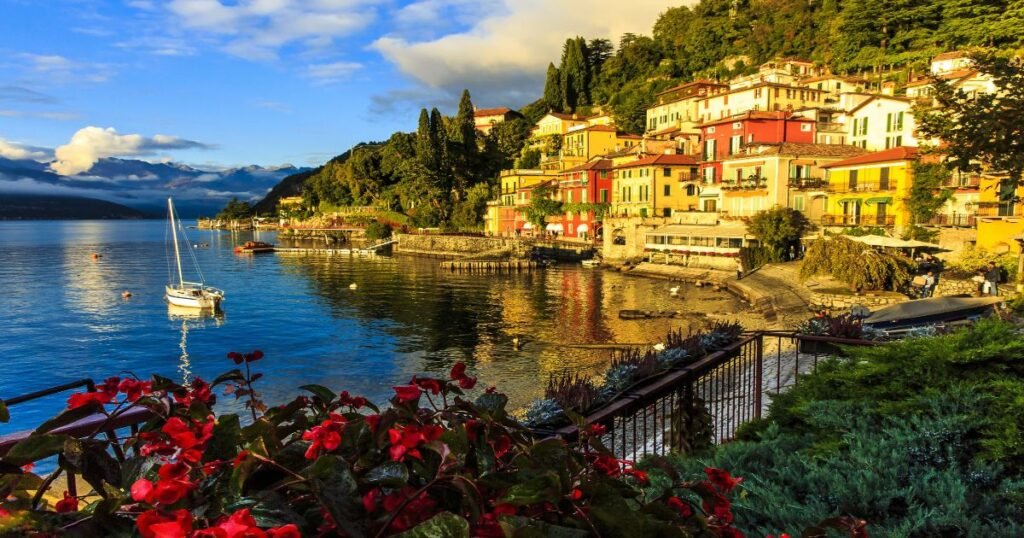
Lake Como, set against the foothills of the Alps, is one of Italy’s most beautiful lakes. Known for its charming villages, luxury villas, and serene waters, Lake Como has been a favorite retreat for aristocrats and celebrities for centuries.
Historical and Cultural Significance:
The region’s historic villas, such as Villa Carlotta and Villa del Balbianello, showcase exquisite architecture and gardens. The town of Como is rich in history, with a cathedral dating back to the 14th century.
Unique Features: Cruise on the lake, visit picturesque towns like Bellagio and Varenna, and enjoy outdoor activities such as hiking and sailing.
Best Time to Visit: Visit between March and November, with May and September offering the best weather for outdoor activities.
Travel Tips:
- Transportation: Use ferries to travel between the towns on Lake Como. Trains and buses connect the lake with Milan and other nearby cities.
- Accommodation: Stay in Bellagio for a central location, or choose Como for more accommodation options.
- Local Customs: Embrace the relaxed lifestyle of the lake region. Respect private property when visiting villas and gardens.
10. Tuscany’s Countryside
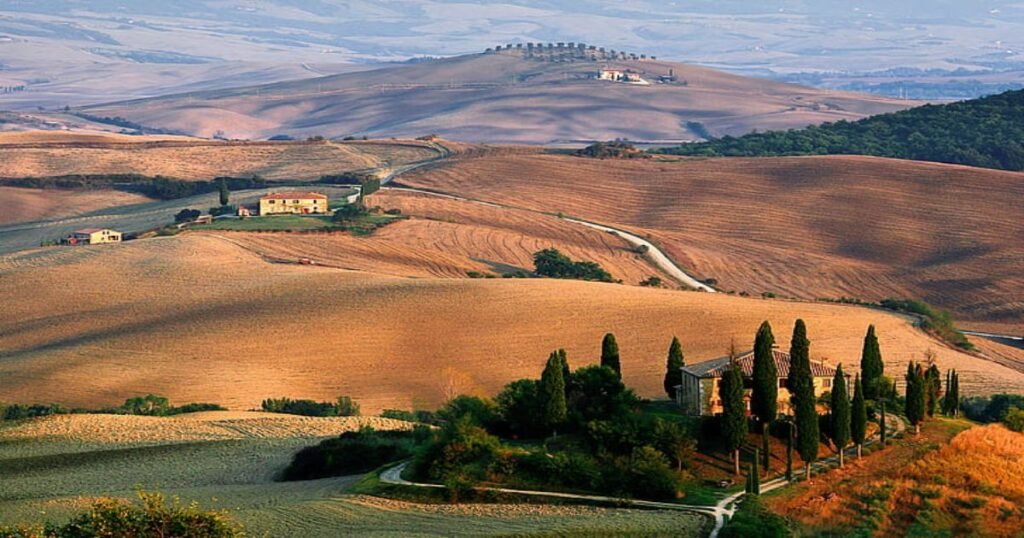
Tuscany, with its rolling hills, olive groves, and vineyards, is a quintessential Italian destination. The region is known for its charming villages, Renaissance art, and world-renowned wines.
Historical and Cultural Significance: Tuscany has been the center of art, culture, and learning since the Middle Ages and Renaissance. Towns like Florence, Siena, and San Gimignano boast rich histories and are home to some of the world’s greatest masterpieces.
Unique Features: Explore medieval villages, take scenic drives through the countryside, and indulge in the beautiful view of this place.
Best Time to Visit: Visit between April and October, with spring and autumn being the most beautiful times to explore the countryside.
Travel Tips:
- Transportation: Renting a car is the best way to explore the countryside and visit multiple towns and villages.
- Accommodation: Stay in a traditional agriturismo (farmhouse accommodation) to experience authentic Tuscan hospitality.
- Local Customs: Participate in local olive oil tastings. Be respectful of the rural environment and agricultural lands.
11. Milan Cathedral (Duomo di Milano), Milan
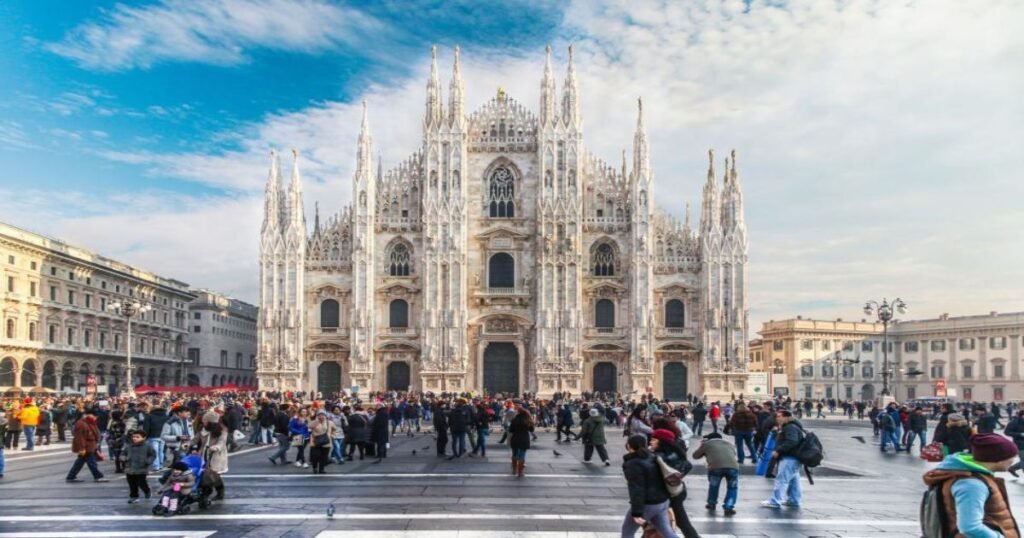
The Milan Cathedral, or Duomo di Milano, is an architectural masterpiece and the largest church in Italy. Its intricate façade and towering spires make it one of the most impressive Gothic cathedrals in the world.
Historical and Cultural Significance: Construction of the cathedral began in 1386 and took nearly six centuries to complete. The cathedral is a symbol of Milan’s religious and cultural history, and its rooftop terraces offer stunning views of the city.
Unique Features: Admire the intricate carvings, stained glass windows, and the golden Madonnina statue atop the cathedral’s highest spire.
Best Time to Visit: Visit between April and October, with early mornings being the best time to avoid long lines and enjoy a peaceful visit.
Travel Tips:
- Transportation: The Duomo is located in Milan’s historic center and is easily accessible by metro, tram, or bus.
- Accommodation: Stay in the city center for easy access to the cathedral and other attractions.
- Local Customs: Dress modestly when entering the cathedral. Photography is allowed, but avoid using flash.
12. Verona Arena, Verona
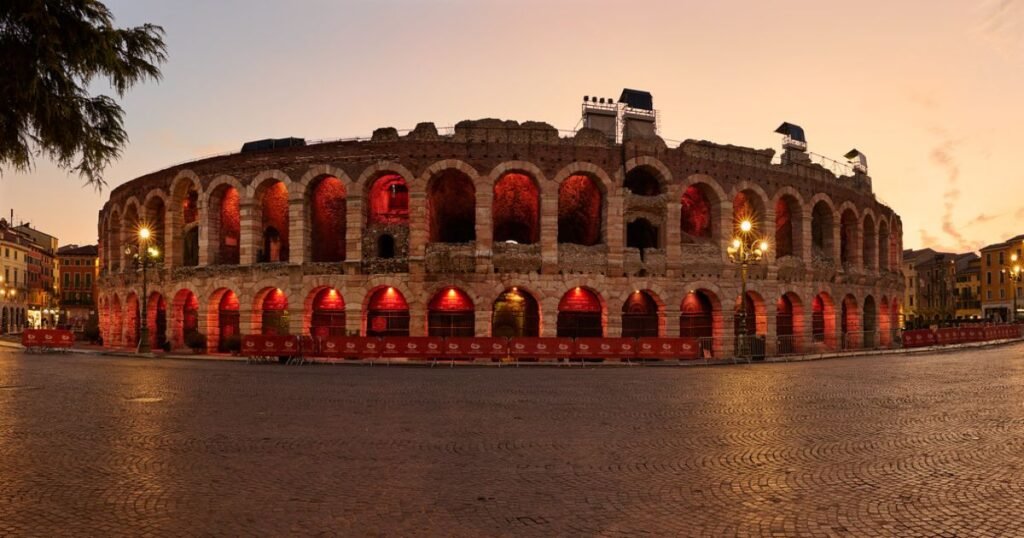
The Verona Arena, a Roman amphitheater built in the 1st century, is one of the best-preserved ancient structures in Italy. It’s famous for hosting operas and concerts in a stunning open-air setting.
Historical and Cultural Significance: The arena could once hold up to 30,000 spectators and was used for gladiator games and public events. Today, it’s a cultural hub and a UNESCO World Heritage Site.
Unique Features: Experience an opera performance in the arena for a truly unique and atmospheric evening.
Best Time to Visit: Visit between June and August during the opera season, or explore the arena during the day for a quieter experience.
Travel Tips:
- Transportation: Verona is easily accessible by train from Venice or Milan. The arena is located in the city center.
- Accommodation: Stay near Piazza Bra for proximity to the arena and other attractions.
- Local Customs: Attend an opera if possible. Respect the historical site by not touching or climbing on the ancient stones.
13. Capri, Campania
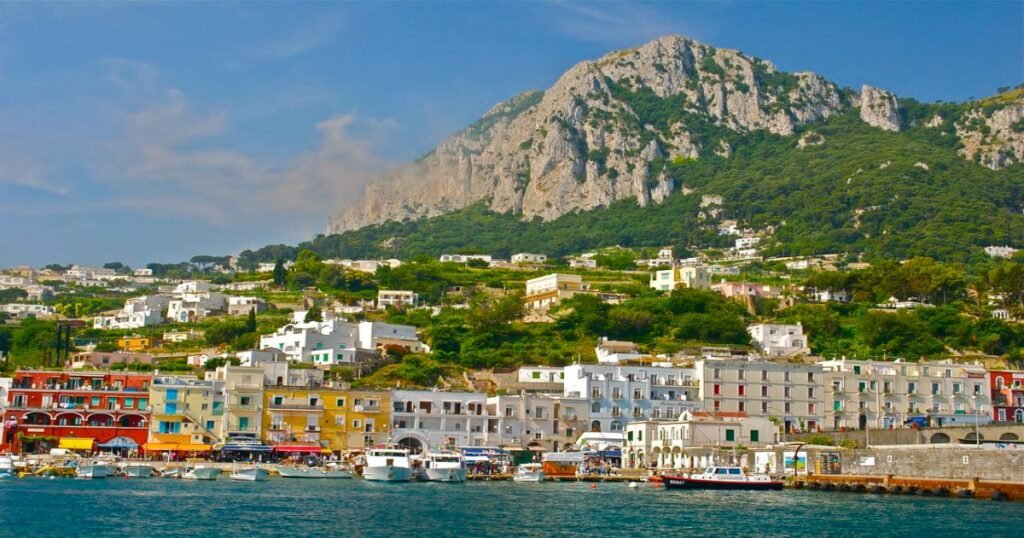
Capri, a breathtaking island in the Tyrrhenian Sea, is known for its rugged coastline, dramatic cliffs, and luxury boutiques. The island’s charm lies in its natural beauty, ancient ruins, and glamorous appeal, making it a popular destination for travelers seeking both relaxation and adventure.
Historical and Cultural Significance: Capri has been a beloved retreat since Roman times, attracting emperors, artists, and writers. It is home to ancient ruins such as the Villa Jovis, once the residence of Emperor Tiberius, and has inspired countless works of art and literature.
Unique Features: Visit the iconic Blue Grotto, where sunlight creates an ethereal blue glow inside the cave. Take a chairlift to Monte Solaro for panoramic views, or stroll through the picturesque streets of Capri town.
Best Time to Visit: Visit between April and June or September and October when the weather is pleasant and crowds are fewer.
Travel Tips:
- Transportation: Reach Capri by ferry or hydrofoil from Naples or Sorrento. Once on the island, use buses, taxis, or funiculars to explore.
- Accommodation: Stay in Capri town or Anacapri for a range of hotels, from luxury resorts to quaint guesthouses.
- Local Customs: Respect the local environment by staying on designated paths and avoiding littering. Dress casually but elegantly, as Capri is known for its stylish atmosphere.
14. Uffizi Gallery, Florence
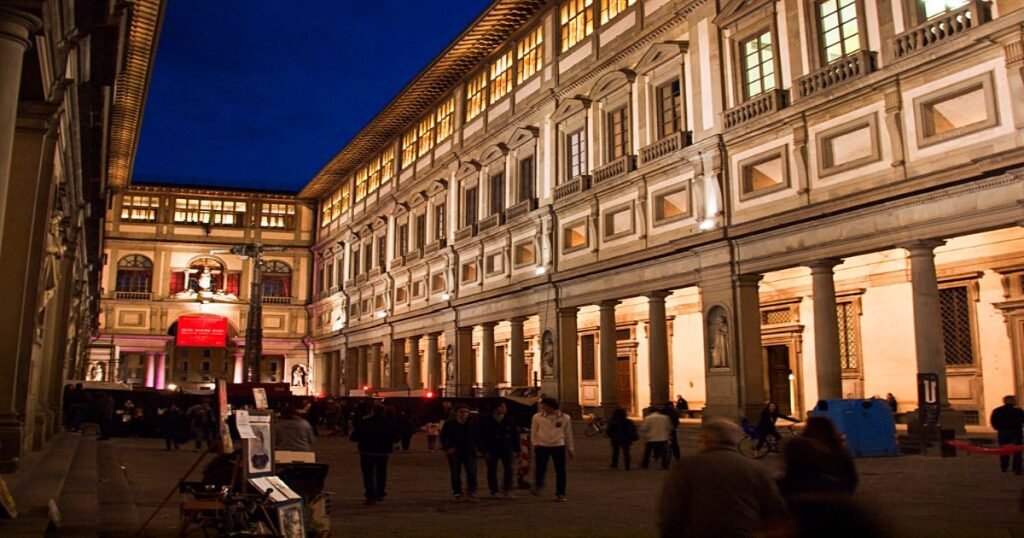
The Uffizi Gallery, located in the heart of Florence, is one of the oldest and most renowned art museums in the world. Established in 1581 by the Medici family, the gallery houses an impressive collection of Renaissance masterpieces.
Historical and Cultural Significance: The Uffizi Gallery is a treasure trove of art, reflecting the rich artistic heritage of Florence. It showcases works from legendary artists such as Leonardo da Vinci, Michelangelo, and Botticelli.
Unique Features: Visitors can admire Botticelli’s The Birth of Venus, Michelangelo’s Doni Tondo, and many other iconic pieces.
Best Time to Visit: Visit from March to June or September to November for fewer crowds and mild weather.
Travel Tips:
- Transportation: The gallery is located in the center of Florence, and it’s easily accessible by foot, taxi, or bus. The Santa Maria Novella train station is nearby.
- Accommodation: Choose accommodations near the city center to enjoy easy access to other attractions like the Florence Cathedral and Ponte Vecchio.
- Local Customs: Dress modestly and maintain a quiet demeanor inside the gallery. Booking tickets in advance is highly recommended due to the high volume of visitors.
15. Valley of the Temples, Sicily
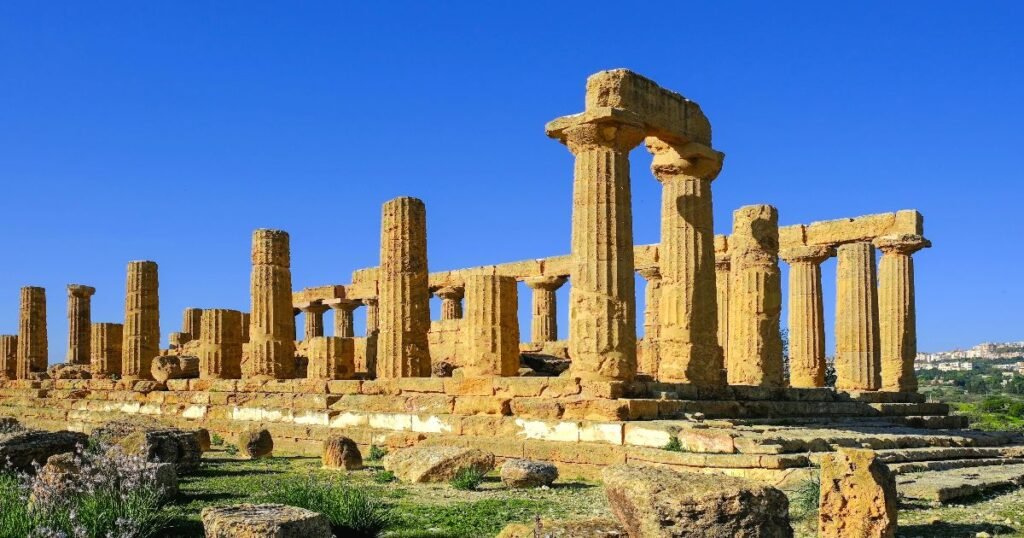
The Valley of the Temples, located in Agrigento, Sicily, is an extraordinary archaeological site that offers a glimpse into ancient Greek civilization. This UNESCO World Heritage Site features some of the best-preserved Greek temples outside of Greece.
Historical and Cultural Significance: Dating back to the 5th century BC, the Valley of the Temples showcases the grandeur of ancient Greek architecture and culture. The site contains several well-preserved Doric temples, including the iconic Temple of Concordia, reflecting the power and influence of the ancient Greek colonies in Sicily.
Unique Features: The site is spread across a vast area, featuring numerous temples, ruins, and gardens. The Temple of Concordia is one of the best-preserved Greek temples in the world.
Best Time to Visit: The best time to visit is between April and June or September and October when the weather is pleasant and the landscape is lush and green.
Travel Tips:
- Transportation: The site is best reached by car or bus from nearby cities such as Palermo or Catania. There are guided tours available for those who prefer a deeper understanding of the site’s history.
- Accommodation: Stay in Agrigento’s city center for convenient access to the site and other local attractions.
- Local Customs: Wear comfortable walking shoes and bring sun protection, as the site involves a lot of walking and has limited shaded areas. Respect the ancient ruins by not climbing on or touching the structures.
Also Read:
15 Best Places to Visit in Spain
15 Best Places to Visit in France
Conclusion
Italy is a country of incredible diversity, offering everything from historic cities and ancient ruins to stunning coastlines and breathtaking natural landscapes.
Each region has its own unique charm and cultural heritage, making it a destination that rewards exploration and discovery.
Whether you’re wandering through Rome’s ancient streets, or soaking up the glamour of Capri, Italy offers an unforgettable experience that leaves a lasting impression.
FAQs
1. What is the best time to visit Italy?
The best time to visit Italy is during the spring (April to June) and fall (September to October) when the weather is pleasant, and there are fewer tourists.
2. How should I get around in Italy?
Italy has an extensive transportation network, including trains, buses, and ferries. For exploring rural areas, renting a car is recommended, but cities like Rome, Florence, and Venice are best navigated on foot or by public transport.
3. Are there any local customs I should be aware of?
Italians value courtesy and respect. Dress modestly when visiting churches, avoid speaking loudly in public spaces, and always greet people with a “Buongiorno” or “Buona sera” depending on the time of day.
4. What are some must-try Italian dishes?
Try regional specialties such as pizza in Naples, pasta in Bologna, risotto in Milan, and gelato everywhere. Each region has its own culinary traditions worth exploring.
5. Can I use credit cards in Italy?
Credit cards are widely accepted in most hotels, restaurants, and shops, but it’s always good to have some cash on hand, especially in smaller towns or rural areas.

